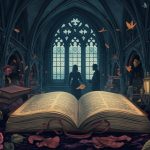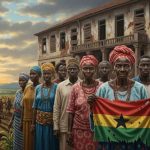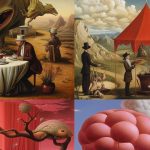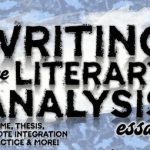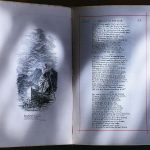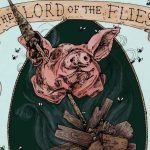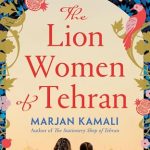Magical realism in modern fiction is one of such genres where you read something and think. It is when the story is set within a realistic world of everyday outcomes, but then it has some of these little bits of magic that no one questions. These moments somehow do not feel like fairy tale or fantasy, they feel like secrets that the real world has been hiding all this time. In this article, we are going to examine the meaning of magical realism, how it is distinct with both fantasy and surrealism, and why it has remained to be one of the most successful means of capturing the imagination of people all over the world. Such examples of magic realism in contemporary fiction will be in life, more so that between classic novels to simple moments that seem like they are fictional.

Key Points of Magical Realism in Modern Fiction
Magical realism does not separate the real with the magical but instead is a combination of both.
| Key Points | Explanation |
| Cultural, Political, and Emotional Motifs | Themes often reflect cultural identity, political struggles, and deep human emotions. |
| Global Presence | Though rooted in Latin American literature, magical realism is found in modern fiction worldwide. |
| Acceptance of the Extraordinary | Supernatural or extraordinary elements are treated as normal and unquestioned in the story’s world. |
| Blending of Real and Magical | Magical realism does not separate the real from the magical; instead, it fuses both seamlessly within the narrative. |
What Is Magical Realism?
Definition and Essence
In literature, magical realism is a literary style in which fantastical or magical things occur in a real setting, but characters respond to them on the assumption that they are normal.
It is one of its peculiarities as well as a matter-of-course acceptance. In contrast with fantasy, where magic may exist in another world or else definition of rules, magical realism does not allow magic to lose itself in another life.
German art critic Franz Roh coined a term magischer Realismus (magical realism) in 1925 to apply to visual art. It was later applied through the writings of authors such as Gabriel Garca M arquez and Alejo Carpentier to become a literary term, particularly of those of Latin American.

The Difference between it and Fantasy, and Surrealism
Fantasy presents us with an entirely different world, such as Middle-earth by Tolkien or the wizarding world that is highlighted by J.K. Rowling. Surrealism conversely is surreal and not very logical, and defies logic altogether.
The middle one is magical realism: its world is realistic and understandable, yet little miracles of impossibility are inherent to it.
In One Hundred Years of Solitude, ghosts and supernatural events combine with political warring and family dramas, and every one of them is totally unsurprising.
Tap and World Power
Magical Realism of Latin America
Due to the historical upheavals and cultural fusion, the strong connection with myth, magical realism became a feature of Latin American literature in the middle of the XX century.
The writers such as Gabriel Garcia Marquez (One Hundred Years of Solitude), Isabel Allende (The House of the Spirits) and Laura Esquivel (Like Water for Chocolate) used magical realism as a means of addressing political realities, spiritual beliefs, and the merging of indigenous, African, and European influences.
A World Movement
Magical realism is rather global despite it being a popularized style in Latin America. Salman Rushdie has applied it in Midnight Children to experience the post-colonial India, and Haruki Murakami in Japan intends to incorporate surreal episodes into the daily Tokyo routine.
The Buried Giant by Kazuo Ishiguro is an apparent bending of both memory and time, with feet staying firmly placed in the human emotion. The style is accustomed to every culture, it has got its myths, histories and truths.
Main Features of Magical Realism
Real Life Fantastical or Fantastical Setting
Creation of stories has the feel of being in a real place, at a real time- a place or political era or landscape in many incidences based on real life settings.
In such environment, the unusual things occur: a woman flies up into the sky when hanging laundry (The House of the Spirits) or a river turns to blood. These are moments that are not explained in the way of a reality.
Belief in the miraculous being usual
There is hardly any shock on magic described by characters. Ghosts are welcome to join a family dinner and the communication process does not stop. This acceptance throws readers into the frame of mind thinking that magic is normal, even rational.
Thin Surrealism and Confusion
Time, Memory and Perception are occasionally manipulated in magical realism. Toni Morrison in Beloved creates confusion of the past and present as the ghost assumes a definite physical form. This is made to provide a subtle feeling of displacement more in line with what a human can feel.
Hybridity and Genre Mash-Ups
It combines history, politics, romance and mythology with the ordinary. The genres blend so much naturally that the reader cannot offer a slight difference between the realism and fantasy.
Modern Fiction Magical Realism
Standout modern writers
Beyond GarcA i a MArquez and Allende, the tradition lives on in the works of more contemporary writers such as Yangsze Choo (The Night Tiger), Aimee Bender (The Particular Sadness of Lemon Cake) and Helen Oyeyemi (Mr. Fox).
Their writings incorporate the usage of magical realism to treat issues of identity, relationship, and their cultural background.
Best contemporary Works
In Exit West by Mohsin Hamid, the metaphor of migration thus becomes the doors capable of materializing people into different parts of the world. George Saunders In the Lincoln in the Bardo, historical realism is combined with ghosts as they discuss grief and legacy.

Real Life and Storytelling examples
Even how Ordinary Life is Charmed
Reality, occasionally offers us bites of a novel: a snowstorm in the middle of summer, or on the radio, when we think about someone who does not know but he or she does like that song, or how we remember a childhood story more clearly than we see the world.
These are lucky real life examples of magical realism modern fiction- tiny little marvels that may be used in reality.
Everyday Events with Surreal Layers
A wedding might include ancient blessings believed to bring rain, and then—against all odds, it rains exactly at the right moment.
One thing that is taught in various families is the idea of passing down a story that appears to be impossible, nevertheless, everybody asserts that it is a truth.
Cultural Narratives/Personal Narratives
In most societies myth and everyday life go hand in hand. Magical realism can take on a non-literary quality because folklore, religious beliefs, and the tales of ancestors often seep into daily life and thus make magical realism seem like a representation of life and not directed imagination.
Why Magical Realism Speaks Now
Epinemotional and Social Criticism
Magical realism is not only an entertainment that educates about something real. The magical can represent something far truer: a political corruption, cultural resilience or personal sorrow.
The wonder adds a flavor that removes the hard edges of ugly truth in order to allow the reader to confront ugly facts without being horrified.
In our present-day realities which are driven by fast movement and the use of technology, magic realism also teaches us not to overlook the ordinary. It teaches us that the extraordinary does not need special effects all the time, it simply could be there all along but we can not see it.
The Way to Write Modern Magical Realism
The combination of Realism and the Magical With Believability
Begin with a down-to-earth relatable location. Bring in the sense of magic without having a too developed explanation on it, just has it be, and have the characters act like it is ordinary. It is all about finesse, the magic must seem like a logical extension of the world, and not like it routs the world.
Avoiding Pitfalls A discussion of the pitfalls none of which is unique to elevated and middle level studies.
Do not make the magic appear like a puzzle that the reader has to solve. Do not fall into complete fantasy/surrealism unless it is what is required. And remember! Magical realism is the best when it helps carry the themes of the story out rather than a mere decoration.
Conclusion
Magical realism blends the world of knowledge and that of dreams. It makes us embrace the fact that life is a combination of minute mysteries, and at times the wildest things can befall without violating the laws of the world we live in. It can be found in the novels, the movies and even in small enchantment that exists in everyday life but no matter where it comes the genre remains inspirational and makes people of different cultures connect.
Looking at magical realism modern fiction examples in life, we would realize that this style of literature is not about imposing fantasy upon reality; it rather includes the exposure of a fantasy, which has always existed.
FAQ’s
It is a form of story telling that incorporates grounded settings and more covert, fantastical features that in a sense have been taken as mundane by the protagonists.
The most iconic example can be described as the One Hundred Years of Solitude by Gabriel Garc Nova M niquiznob Glass.
No, it is a fantasy–its magic lives in another, closed world presented with its own laws, but not blended with other reality.
It is when life strangely seems unreal or magical such as coincidences, myths, or cultural traditions that seem to be magic, yet within the realms of possibility.
Related Posts
Post Modernism | Definition, History, Characteristics & Post Modernists

